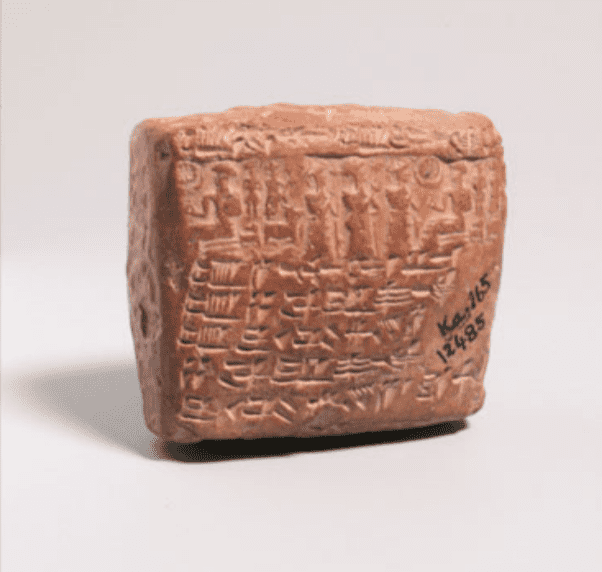Israeli researchers have recently published a paper describing the earliest known prenup contract, with clauses on infertility, surrogacy, and the price to pay when settling a divorce.

Image credits Ahmed Turp et al., Gynecological Endocrinology, 2017.
In today’s society, ‘surrogacy’ refers to the practice of implanting one couple’s fertilized embryo in another woman’s womb, where it will grow and be carried to term. Some 4,000 years back, however, one newly-wed couple in the ancient empire of Assyria also had to grapple with the risk of infertility. Their solution was recorded in a clay tablet, who braved the test of time to become the oldest known marriage contract which touches on the issues of surrogacy and divorce settlements.
“There are many different ways to solve infertility problems — like surrogacy, as mentioned even 4,000 years ago in this Assyrian clay tablet,” the authors write.
The tablet was discovered in modern-day Turkey at Kültepe-Kanesh, a UNESCO archaeological site on the World Heritage list. It’s one in about 23,500 Cappadocian tablets — clay tablets and envelopes with cuneiform script — found at the site. Currently, the ancient contract is on display at the Istanbul Archaeology Museum, in Turkey.
The document is written on a clay tablet in cuneiform, a wedge-shaped script and one of the earliest systems of writing. It details how a man named Laqipum and his bride Hatala will proceed if they can’t have a child within the first two years of marriage. If Hatala proved unable to have a child, the document stipulates, she will buy a slave woman, a hierodule, for her husband Laqipum to sleep with. Here is the translation:
“Laqipum has married Hatala, daughter of Enishru,” the contract reads. “In the country [Central Anatolia], Laqipum may not marry another [woman], [but] in the city [of Ashur] he may marry a hierodule. If, within two years, she [Hatala] does not provide him with offspring, she herself will purchase a slave woman, and later, after she will have produced a child by him, he may then dispose of her by sale where-so-ever he pleases.”
The contract places any issues that may plague the couple’s baby-making efforts squarely on Hatala’s head, which we know today simply isn’t the case. People were much less bio-savvy back in 2000 B.C., however, and concepts like a low sperm count were yet to be discovered. So it’s not the most equitable (or science-backed) contract ever signed, but it does go to show that “the concept of infertility is not just a disease of our age,” according to the authors.
It also details what to do in case things don’t work out between Laqipun and Hatala and they decide to get a divorce. “Should Laqipum choose to divorce her,” the contract stipulates, “he must pay [Hatala] five minas of silver – and should Hatala choose to divorce him, she must pay [Laqipun] five minas of silver,” according to a translation of the contract. A mina was, initially, a unit of weight roughly about 0.56 kg (1.25 pound), but would later develop into a unit of currency
The paper “Infertility and surrogacy first mentioned on a 4000-year-old Assyrian clay tablet of marriage contract in Turkey” has been published in the journal Gynecological Endocrinology.


